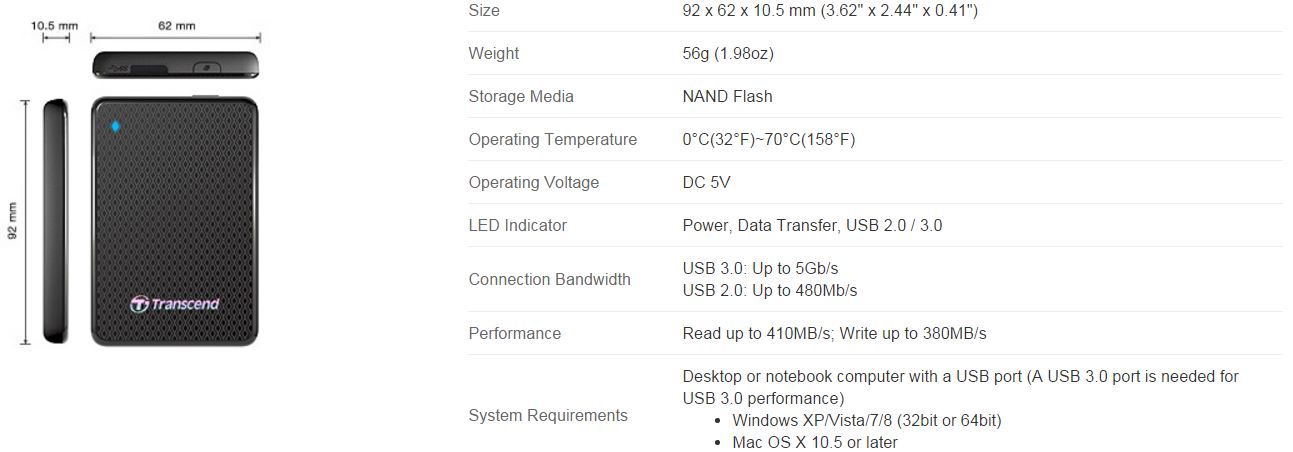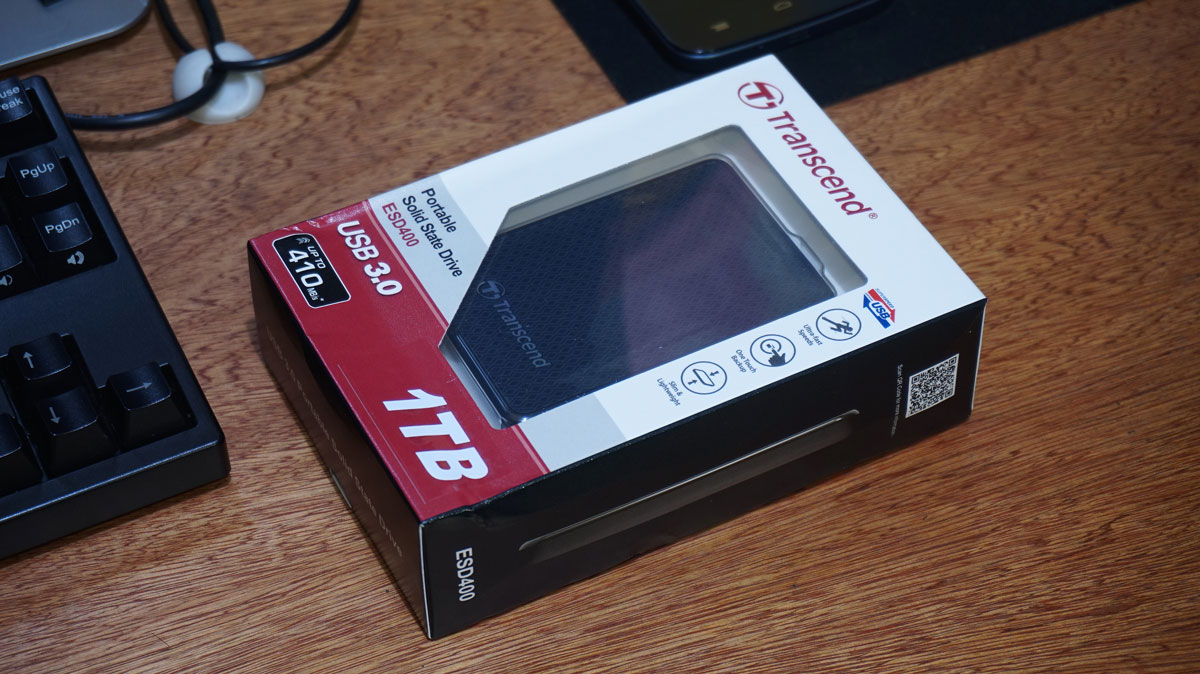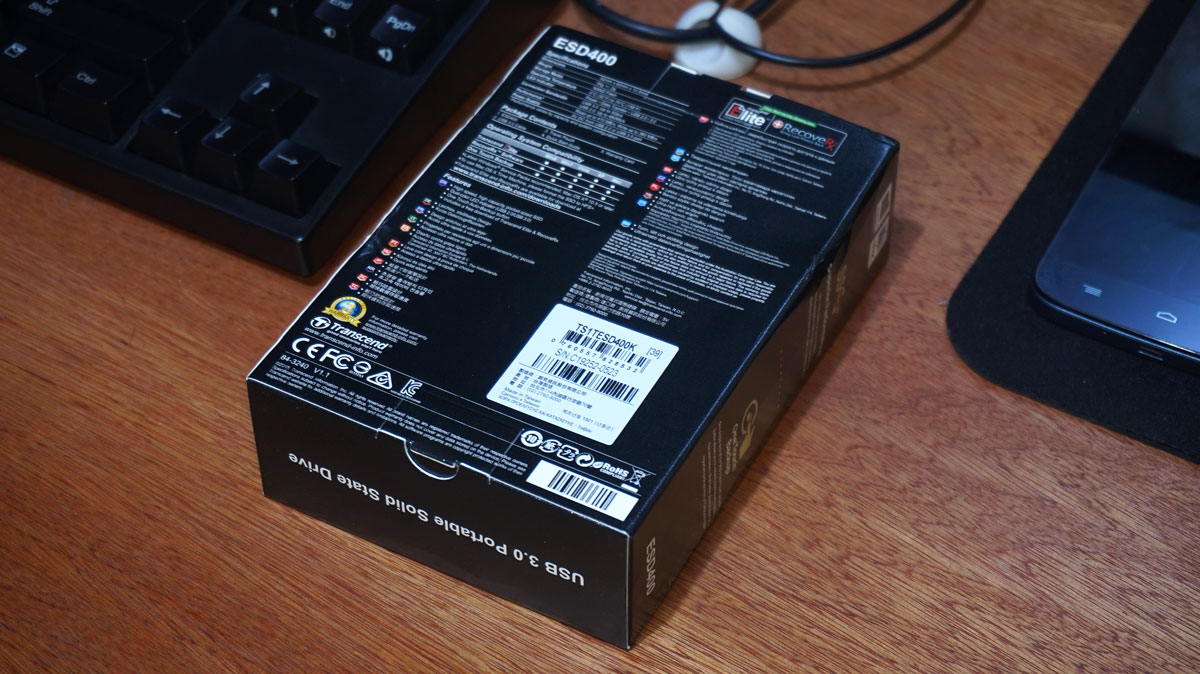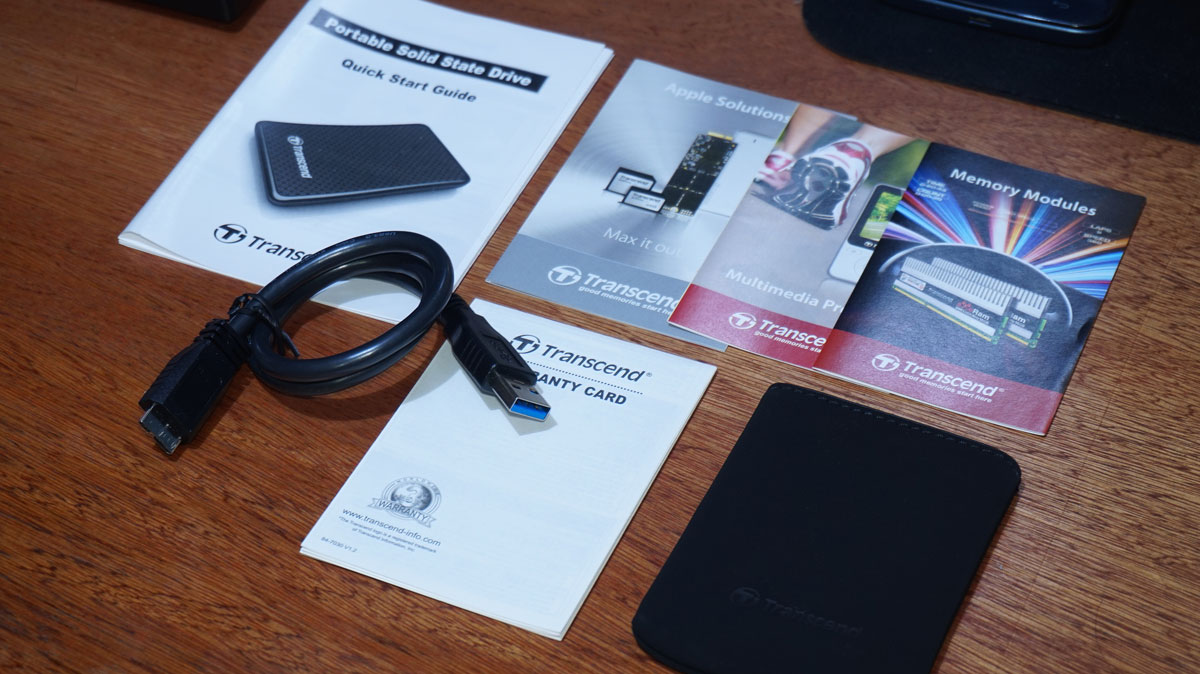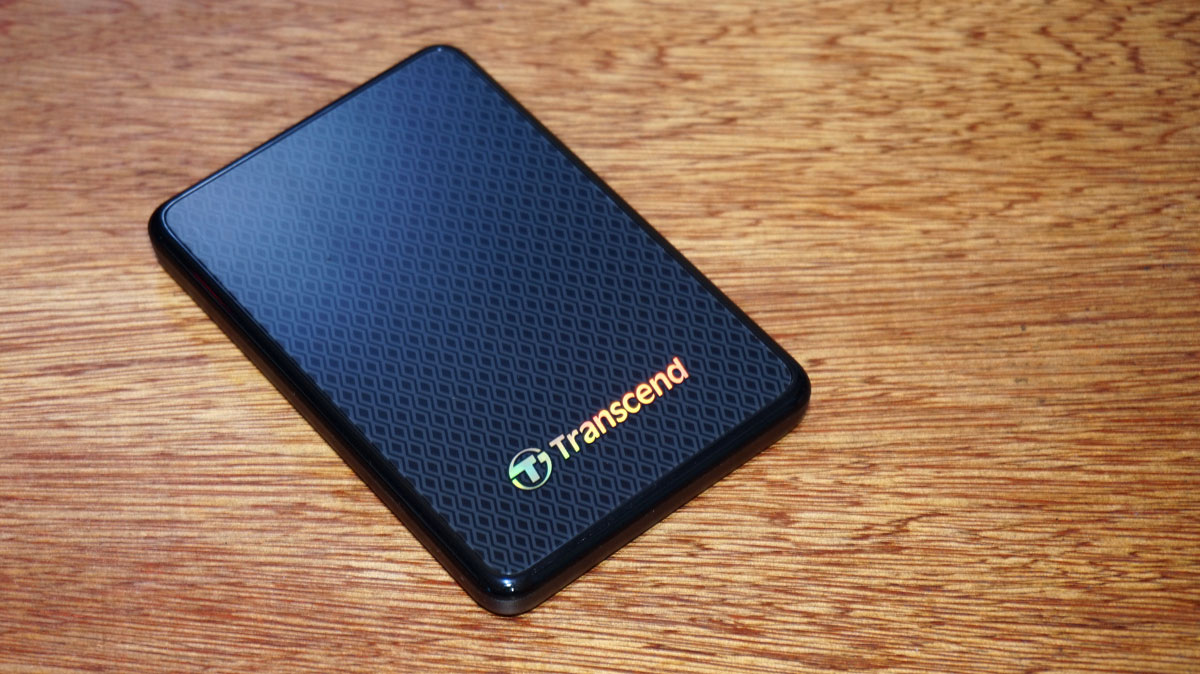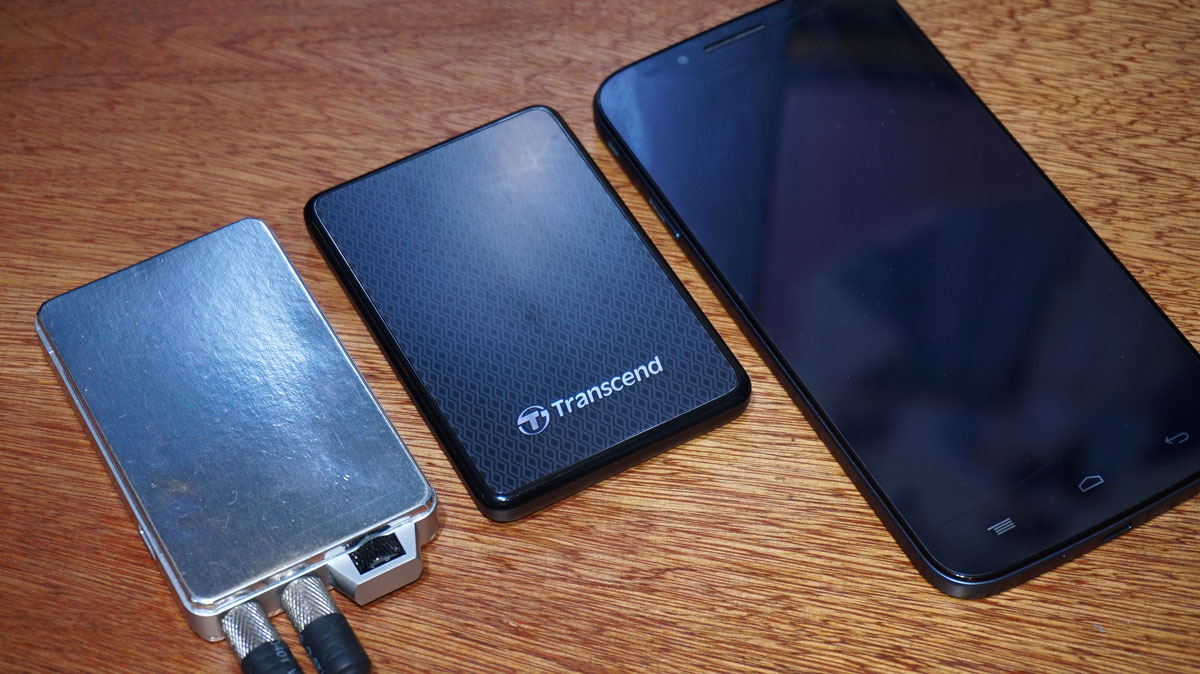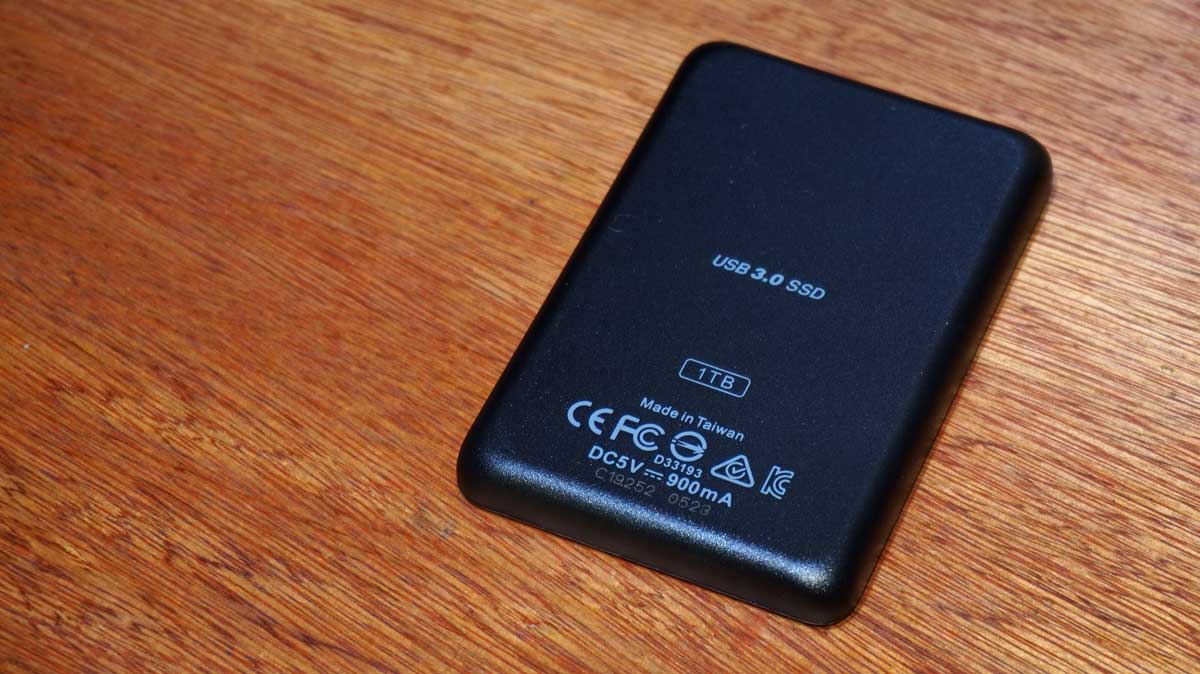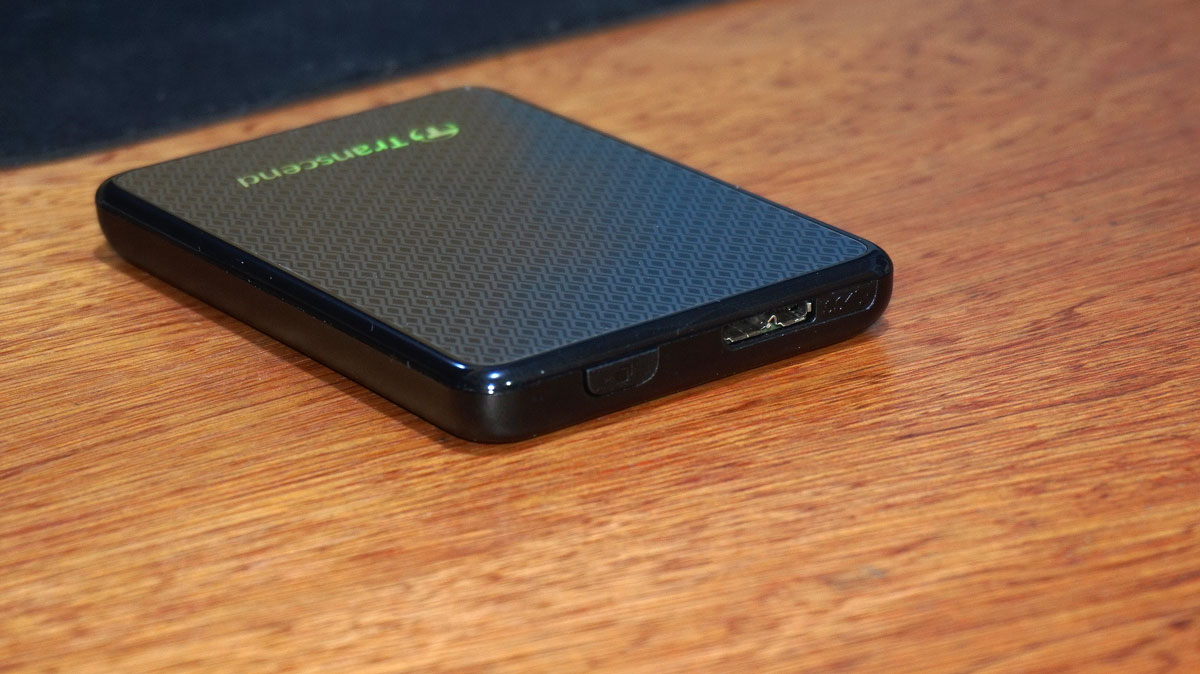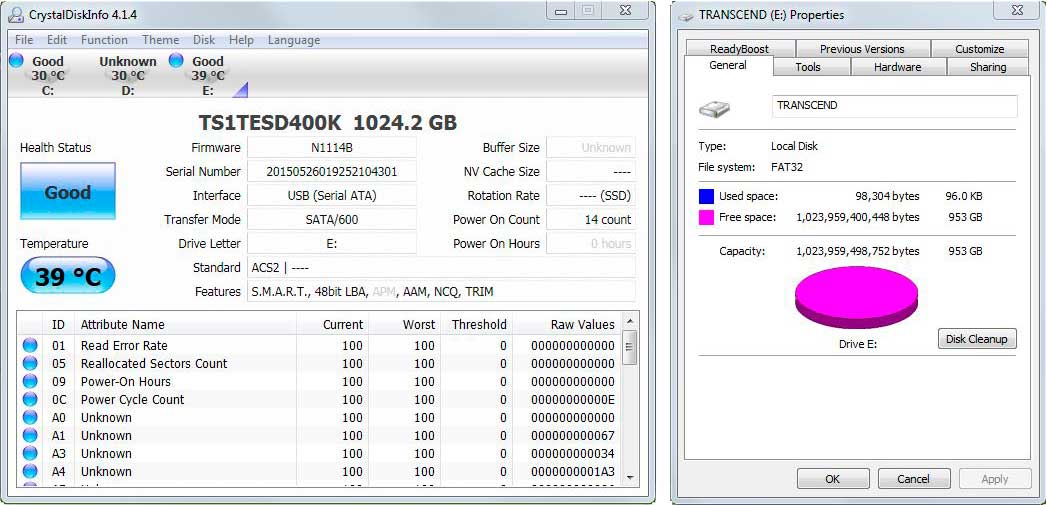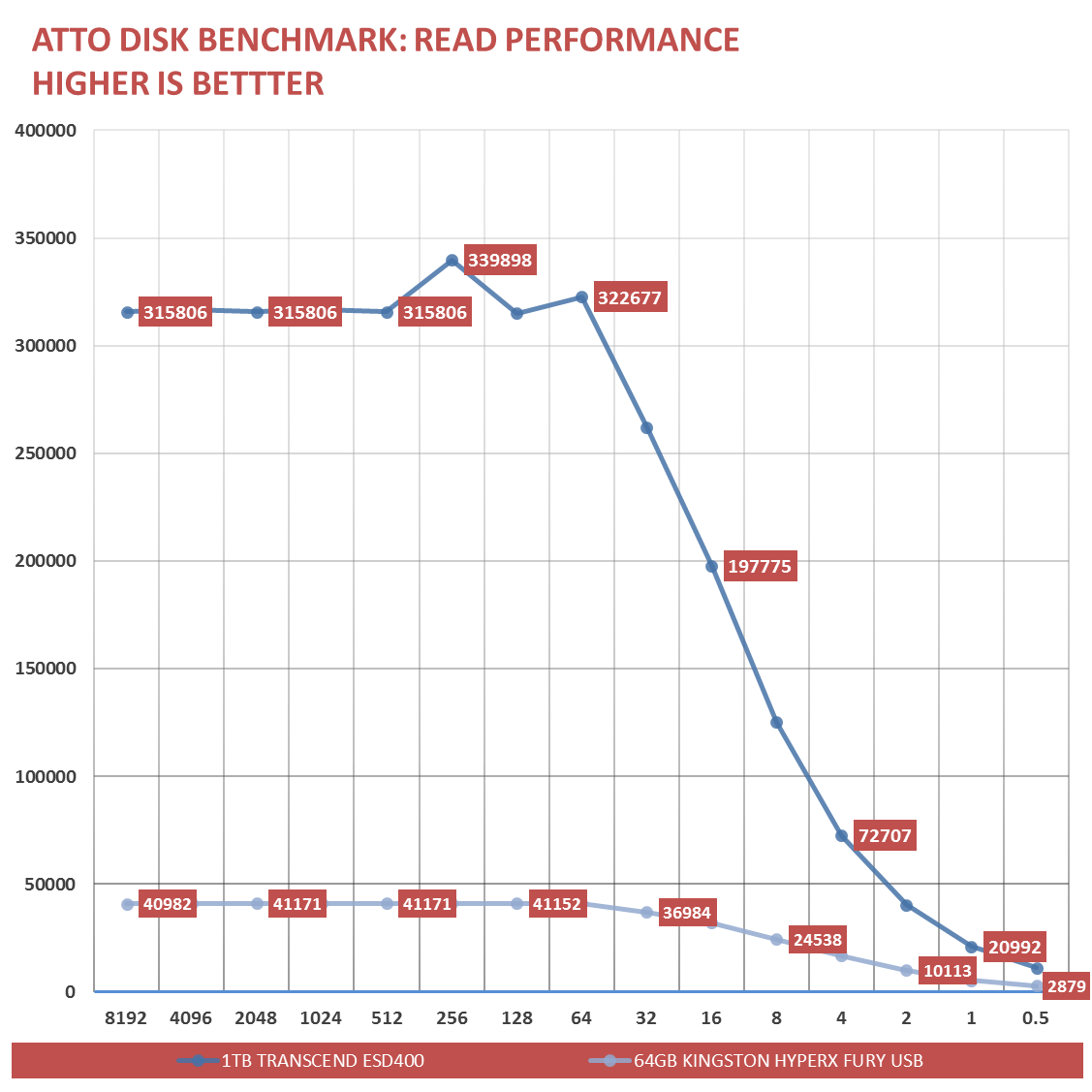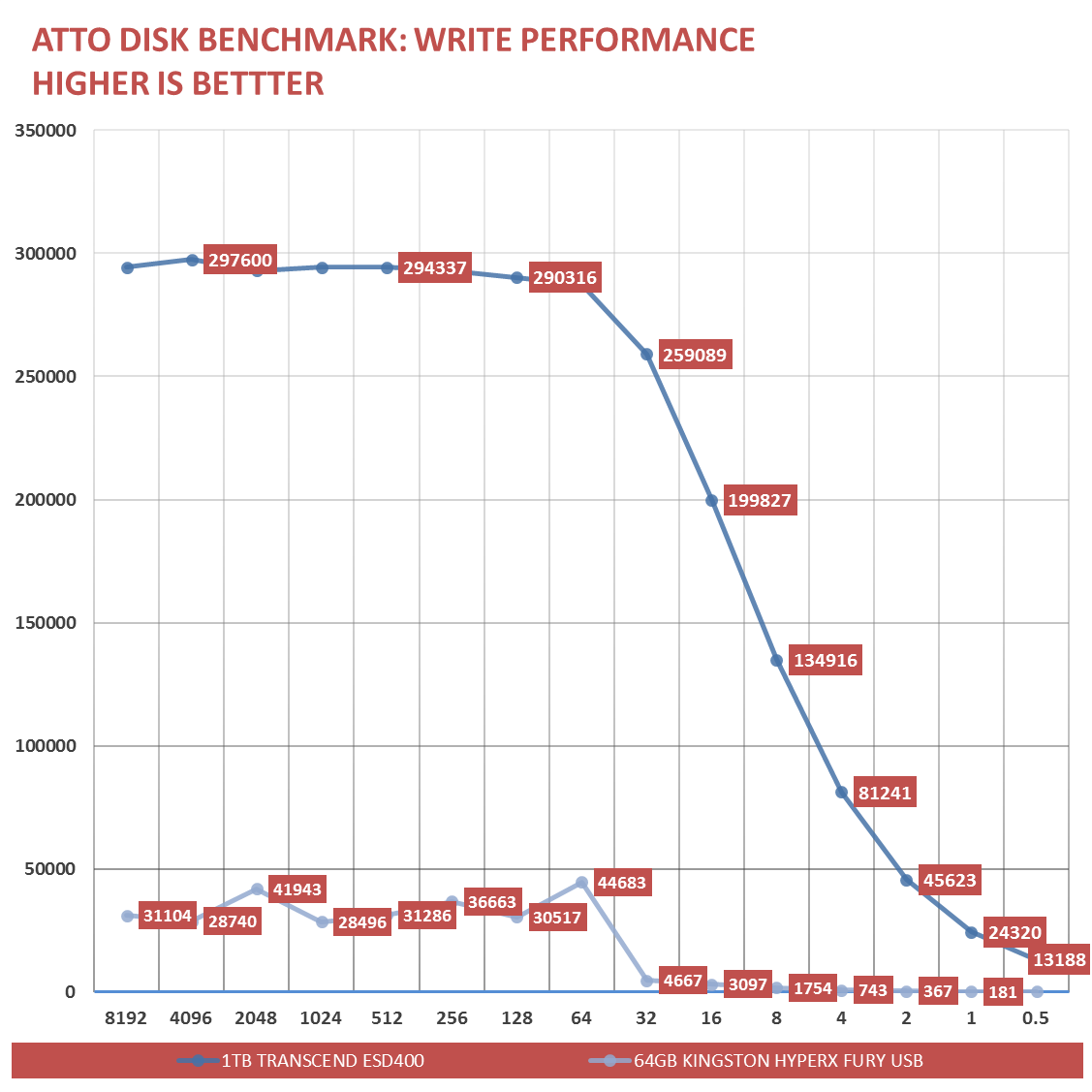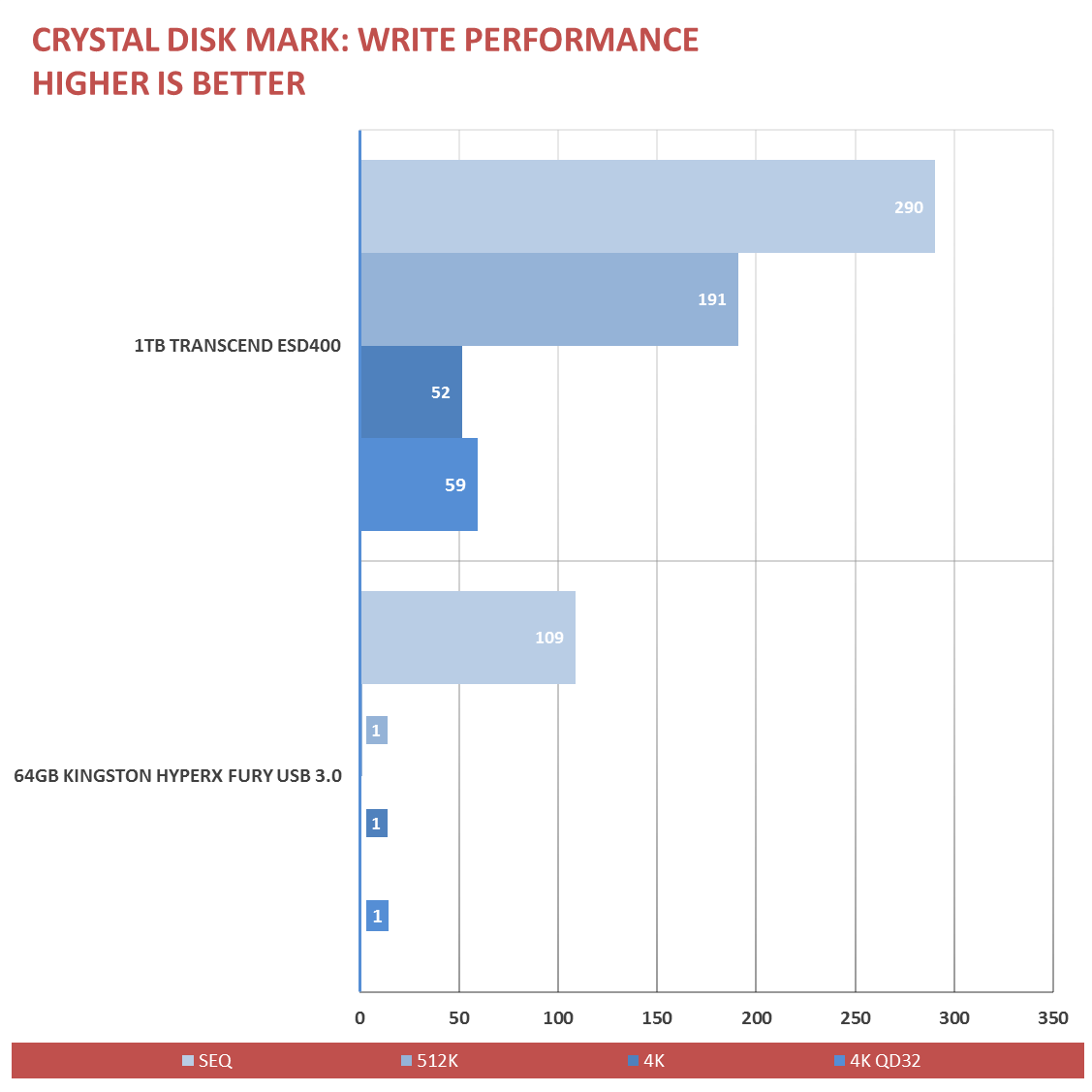SSDs nowadays can be found in almost everything – empowering PCs, servers, phones, thumb drives, and even flight recording devices or black boxes of planes. Their speed and reliability makes up for this feat over mechanical drives and it just wont stop from there as they have also successfully entered the reaches of the outer-space. Their applications thru different industries might be almost limitless, but for us folks – a simple SSD will do. After all, SSDs saw its own bloom with the help of consumers.
Now this puts us to the development of portable SSDs – an idea that is probably as old as SSDs themselves. Back in the days, SSDs are simply outrageously priced per GB, and is limited internally due to interface limitations. Fast forward today, USB 3.0 increased the SSD’s potential enabling them to be connected at a much higher bandwidth than the older generation USB 2.0 interface. Now what we have here folks is an SSD that is built right for the task – The ESD400 from Transcend, featuring a 1TB of capacity and UBS 3.0 interface at a tempting portable form factor. Read on!
Table of Contents:
Specifications
Unboxing
The Transcend ESD400 came in a windowed style packaging – immediately drawing attention to the small external drive and its 1 TB capacity. Some of the drive’s features are laid on this side as well.
The back is full to the brim with details about the drive. That includes the specifications, features in multilingual sets, the packaging’s contents, as well as a disclaimer for our friends that lives down under. (Australian Consumer Law)
The bundle is good with a quick start guide, a warranty card, and 3 pamphlets that pertains to Transcend’s products. Along with the paper works, we’ve got a nice pouch, and a thick 18.5″ USB 3.0 cable. I’d rather see a flat USB 3.0 cable though as a part of the bundle for maximized portability.
Design
The ESD400 is a stylish yet a small external SSD. In fact, it is the smallest 1TB capacity external SSD that we have seen to date at around 3.6 inches in length and 2.4 inches in width. It sports a stylish diamond inspired top finish with a posh aluminum Transcend logo which is quite nice for a branding placement.
The EDS400 is really small, especially if you put it side by side to a 6 incher smartphone. The Fiio E11, which is a popular budget AMP among audiophiles, is also slightly larger both in length, and z-height. Mind you, the E11 is pocket-able enough, so the ESD400 must be much more portable.
The back is bland, with a Black scratch proof plastic material but there’s no rubber feet here for grip. Wont matter anyway since the drive is so light you could move it with a gentle push of your pinky.
The drive features a Micro-B USB 3.0 port, and a single button for One Touch auto-backup function of the drive. Basically, it’ll let you sync & back-up your files based on the Transcend ELITE software’s settings with just a push of a button provided that the software is running.
The USB cable is lengthy at around 18.5 inch. It’s a normal USB 3.0 cable but it’s too bulky for portability and if compared to the small nature of the drive. We’re hoping to see a flat USB 3.0 cable bundled here.
Software
The Transcend ELITE is a suite of storage feature enhancing software for Transcend’s JetFlash, StoreJet and Portable SSD products. It provides instant backups, scheduled backups and restore function, plus Data Encryption with 256-bit AES encryption standard.
You could sync files too, and it also provides Cloud Backup for your files if configured to do so. If you have a m ELITE compatible Transcend storage device, you could download it here: LINK
Test System
Storage devices, unlike motherboards, revolves around the use of various storage benchmarking tools to test their performance. We’ve got loads of them in the past, but we toned down the synthetic benchmarking tools to ATTO, AS SSD and Crystal Disk Mark. It is important to note that we have a pre-made Test OS for the storage benchmarks and we are always aiming to fill up the drive to 50% of its capacity. This is to ensure that we are testing the drive according to its real world usage along with a very small margin of error. Do note that we have disabled the UASP feature of our board as we have tested external drives without it in the past so the results should be slower than what Transcend claims. We will however retest the drive with the UASP enabled once we got the drive again.
The Transcend ESD400 features the TS1TESD400K SSD inside with 1024.2 GB of capacity, roughly translating to 953GB of available space. The test system’s specifications are as follows:
| CPU | Intel Core i5 4670K |
| MOTHERBOARD | ASUS Z97-PRO WiFi AC |
| CPU COOLER | Cooler Master Seidon 120XL |
| MEMORY | ADATA XPG V2 @2400MHz 16GB |
| GRAPHICS CARD | ZOTAC GeForce GTX 970 4GB |
| INT. STORAGE | Kingston V200+ SSD 120GB |
| PSU | Cooler Master Silent Pro Hybrid 1300W |
| DISPLAY | DELL S2340L 23″ IPS |
| OS | Microsoft Windows 7 Ultimate x64 SP1 (Updated) |
| SOUND CARD | Realtek ALC1150 |
| EXT. STORAGE | 2TB Western Digital My Passport Studio |
For those who are not familiar with UASP, it stands for USB Attached SCSI. It is a protocol that is used to move data to and from USB storage devices and is introduced with the advent of USB 3.0. Basically, it allows faster transfer rate over the norm when used with SSDs over the older Mass Storage Bulk-Only Transport (MSBOT) protocol. It is however not included on Microsoft Windows and must be installed via your motherboard’s setup tool (USB Boost on ASUS) or equivalent.
Performance
First up in the benchies is ATTO Tech’s Disk Benchmark. It basically measures the system’s storage performance with various transfer sizes and test lengths for reads and writes. An industry standard. Test results are in KB/s.
Next up is the venerable Crystal Disk Mark. This storage benchmarking software aims to measure sequential, and random read/write speeds of storage devices. Check out the author’s page HERE. Test results are in MB/s.
AS SSD features read / write specific tests without using the cache, and that could strain mechanical drives. We used AS SSD’s extra benchmarks to check out the drive’s file copy performance. Test results are in MB/s.
The real world performance tests is our home brewed file copy test which involves Images, Videos, PSD files, DOC files, XML files, PDFs, etc. you name it, to simulate a real world file copy scenario. Do note that the files are inside a folder, and they’re randomly placed. Test results are in seconds.
Conclusion
The Transcend ESD400 is a well thought out product aimed for consumers who needs a high capacity, high speed drive on the go without sacrificing portability. Featuring a USB 3.0 connectivity, and support for UASP for faster performance, the EDS400 though has yet to be tested with the UASP standard, delivered a good and consistent performance across the benchmarks, especially with the real world file copy tests. We apologize if we have yet to include UASP on our benchmarks, and thus we have requested to re-test the ESD400. Transcend is humble enough to have us check it out once again.
Price is a factor when it comes to high capacity SSDs, and with the ESD400, you are looking at a 399 USD 1TB external SSD. It aint bad, and Transcend had 3 more variants including the 129GB, 256GB, and 512GB versions with prices starting at 79 USD up to 199 USD. Of course, speed should vary between models. All are available at Amazon though, and is a direct competitor to the popular external SSD – the MyDigitalSSD which is also small, but has no available 1TB model yet. Additionally, a few external SSDs with the same capacity features a price premium of 100 USD if compared to the ESD400 so choosing this drive is a smarter option.
This drive is small, yet big on capacity and price sure is good. The only thing we could complain about it is the bulky standard issue USB 3.0 cable which should be replaced by a flat one for maximum portability. Local availability has yet to be announced, and we’re hoping that once it landed in the Philippines, pricing will stay as sweet as the international MSRP.
Transcend ESD400
Summary
The Transcend ESD400 is a well thought out product aimed for consumers who needs a high capacity, high speed drive on the go without sacrificing portability.


